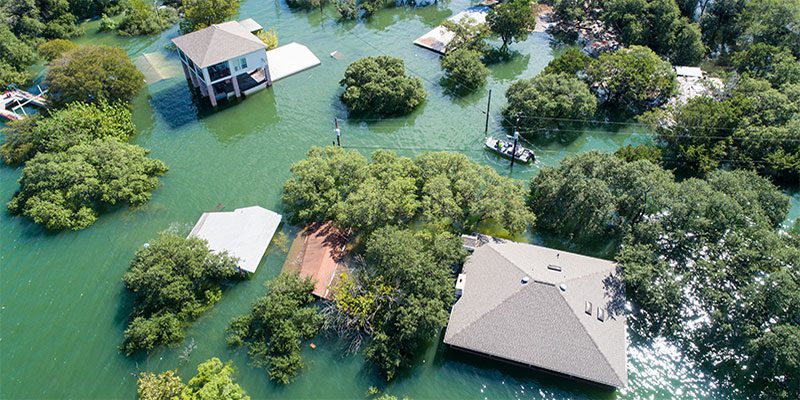
By Brian Ford Posted May 31, 2020, In Flood
Another April has gone by and we’re seeing another year of National Flood Insurance Program (NFIP) rate increase. On April 1, 2020, the NFIP released its next set of rate increases along with some new guideline changes. These NFIP rate increases are required by the Biggert-Waters Flood Insurance Reform Act of 2012 and the Homeowners Flood Insurance Affordability Act of 2014 and meant to prevent the insolvency of the NFIP.
1. Premium Increases
Overall, the NFIP is seeing an average country-wide rate increase of 9.9%, with the average premium increasing from $993 to $1,092 (when the HFIAA surcharge and Federal Policy Fee are included). However, the premium increase you will see will depend on your flood zone, year of construction, how the property will be used (primary vs. secondary or rental), and elevation difference. In Pinellas county most of the homes were built prior to the initial 1974 floods, so they are considered “Pre-FIRM” or Pre-Flood Insurance Rate Maps. Typically, this means they were built under what the NFIP deems as the base flood elevation. As you can see below, Pre-FIRM AE zones (which compromise most of the older homes in Pinellas) are seeing at 7.5% average rate increase.
Below are the average NFIP rate increases for all properties:
- Pre-FIRM rate increases Special Flood Hazard Areas (SFHAs)::
- Primary residences in most A (including AE) and V zones (including VE)
- 7.5% average increase
- Non-primary residences (secondary, seasonal, and rental properties) in most A (including AE) and V zones (including VE)
- 23.1% – 25% average increase
- Non-residential businesses
- 23.1% – 25% average increase
- Primary residences in most A (including AE) and V zones (including VE)
- Post-FIRM rate increases in Special Flood Hazard Areas (SFHAs):
- All occupancies in A1-A30 & AE zones
- 5% average increase
- All occupancies in AO, AH, AOB, & AHB zones
- 2.7% average increase
- All occupancies in Unnumbered A zones
- 5.1% average increase
- All occupancies in V, V1-V30, and VE zones
- 5.6% average increase
- All occupancies in A1-A30 & AE zones
- Non-Special Flood Hazard Area (Non-SFHA) Pre- and Post-FIRM properties:
- 3.8% – 4.2% average increase
Besides the rate increases, we’re also seeing 3 new guideline updates.
2. Primary Residence Guidance
Now if the mailing address and the property address are the same on the application, the NFIP can issue the policy without requiring the primary residence form. However, if the addresses do not match, the primary residency form or other documentation such as a driver’s license, automobile registration, or voter’s registration are required.
3. Non-residential Floodproofing Premium Credit
Floodproofed buildings are non-residential (commercial) buildings that are built below the base flood elevation. However, they are built watertight with all elements impermeable to the entrance of floodwater. In the past, the NFIP determined the rate for these buildings based on the elevation difference of the floodproofed elevation. But now with the April 1st changes, the NFIP will establish the base rate from the elevation difference between the lowest floor elevation and the base flood elevation.
4. V-Zone Risk Rating Factor Form
FEMA is discontinuing the use of the V-zone Risk Rating Factor Form. This form allowed for mitigation discounts to properties on an individual risk basis.
For most consumers, the only one of these changes to be of any concern are the rate increases. The rate increases on most primary residences are pretty normal increases. However, the rate increases on Pre-FIRM secondary properties, seasonal properties, rental properties, and commercial buildings is significant. As these premiums increase 20%+ each year we have seen more and more of these clients begin to look at private flood as an alternative. The private market has taken some increase since Hurricane Irma and Hurricane Michael, but for these types of properties, it typically is less expensive. These markets can typically also offer higher building and contents limits and additional coverages not offered by the NFIP, such as loss of use and Business Income.
If you have any questions regarding the NFIP changes or flood insurance, please reach out to our agent and part-owner, Brian Ford, CPCU, CIC at bford@insuranceresources.com, or 727-345-0242.











